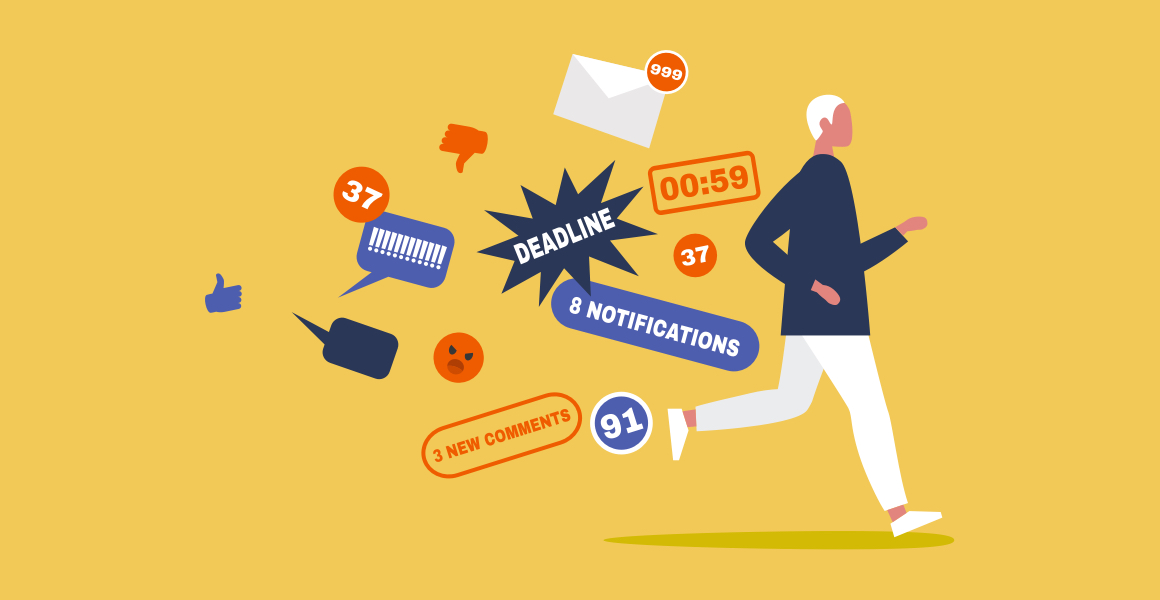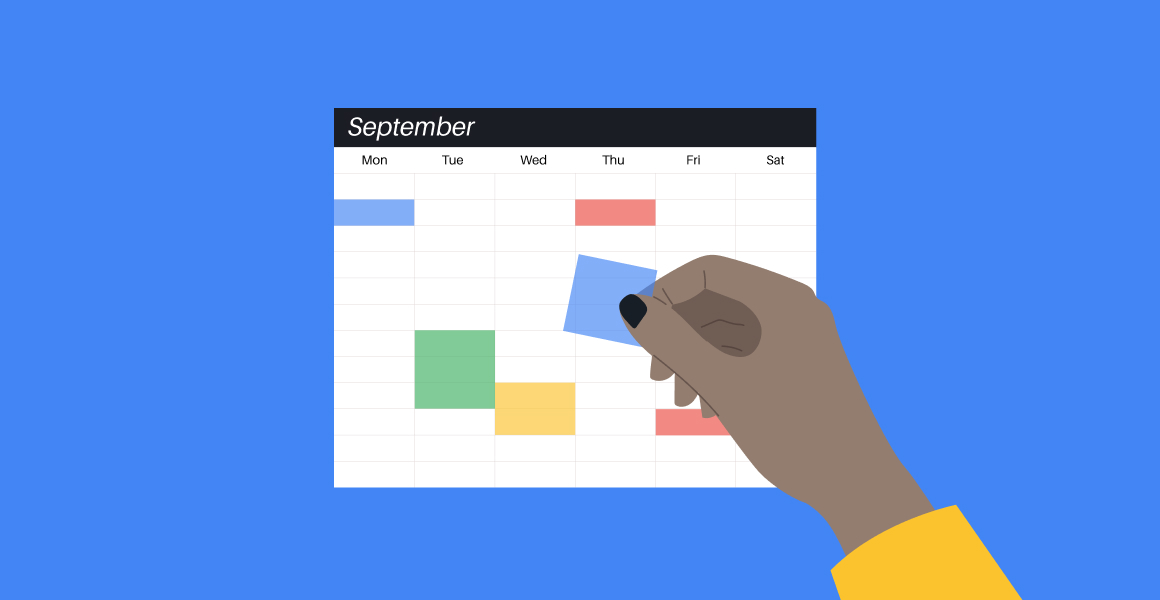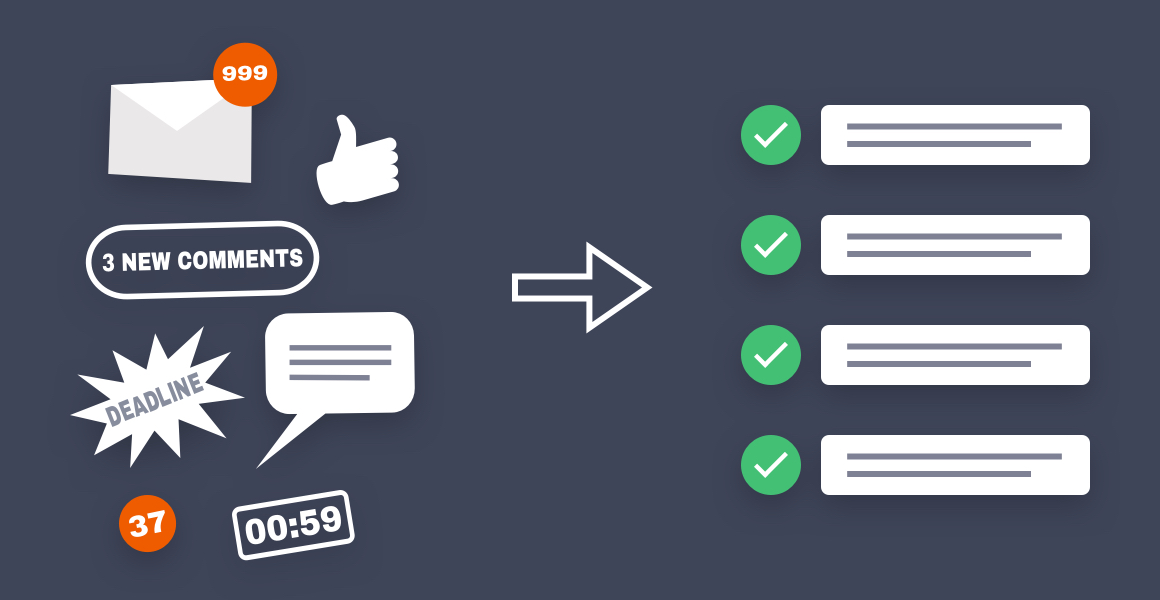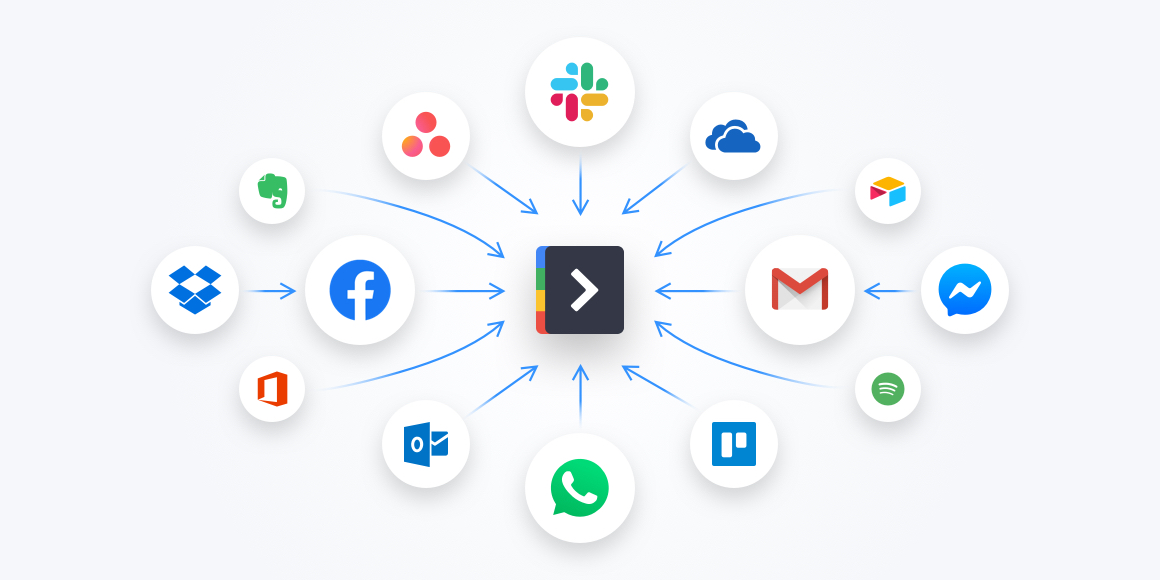There is one magic word that can increase both your productivity and your sanity. Any ideas?
Saying “no” allows you to say “yes” to the things that are most important to you. By focusing on areas that align with your priorities, you can accomplish more in a single day. Saying no is part of truly focusing on the projects and people that matter most. However, that’s often easier said than done. Saying no is a true art form that requires practice. It’s an art form that some people have perfected, while others have avoided. We can almost guarantee that you can find more productivity in your day and in your life by learning to set better boundaries - starting with saying no.
5 Things To Say No To
If you say yes to everyone and everything, then you’re living by someone else’s agenda and not your own. It’s important to protect your own time and energy - no one else is going to do that for you. Being an advocate for your own boundaries means that you can spend time on things that are a priority to you, whether that’s time with family or an important work project. As you get more comfortable saying no, start by reducing the number of things that you normally say yes to in a given day. Make it a point to do the following:
Say no to distractions
Hundreds of little things compete for our attention at any given moment. Most of us have a job to do during the day, and along with that comes co-workers and email. We also tend to use our devices a lot, and that practice comes with constant notifications from digital platforms that want our attention. That doesn’t even include your phone ringing or other interruptions that can happen at any given time. You may not have control over all the things that can distract you, but as much as you can you should try to limit them. Put your phone into “do not disturb” mode while you’re working on important tasks. Turn off the news and stop scrolling social media while you’re at home and focus on other things. Limit the attention you give to things that commonly distract you.
Related Article: How to Avoid Notification Overload
Say no to people who bring you down
It’s great to be there for friends and family who are having a hard time, and everyone goes through challenges. That’s not what we are talking about here, though. We are talking about those perpetually negative people who bring down those around them. Negativity tends to spread like a disease. You have probably had experiences before where your mood tanks after being around someone who is complaining. You can’t control the attitude of people around you, but you can choose to spend less time with these individuals. If you have emotional vampires in your life that tend to suck the optimism and enthusiasm out of your day, it’s time to reduce the time you spend with them. Don’t ask them to make plans and find yourself busy the next time they ask. You aren’t obligated to spend your time with anyone, especially people who just bring you down.
Say no to beginning new projects
Before beginning something new, take a clear look at your list of priorities and see how the new activity lines up. Often, success is more about the things you say no to than the things you say yes to. To have real focus on your most important things, you’ll have to say no to some other areas. When it comes to work you may not have much of a choice, but you should still review your bandwidth and current project load before committing to new work. You don’t want to sign up for work that you can’t really give your best effort to. In your personal life, think about how new commitments will add to your life and align with your values. That may mean turning down sitting on your HOA board or chaperoning the next field trip.
Say no to unnecessary decisions
Remember how Steve Jobs always wore a black turtleneck? He mentioned that he did so in order to limit the decisions he had to make each day. How much time do you spend making small decisions every day? How many of them could be unloaded to alleviate your mental burden? By reducing the energy you spend on small decisions, you can free up capacity for the big ones. Look for ways to have less choices on the little things every day. What to wear, what to eat for breakfast, which route to take to work, etc. All of these things add up every day and reducing the options at your disposal will make your life easier. Review your daily schedule and see what decisions you can automate or reduce.
Say no to useless meetings
For most people, time is not really a luxury. You have to be selective about how you spend your time, and there is no shortage of demands for your attention. Protect your time by saying no to unnecessary meetings, and make sure you don’t schedule them yourself. If a communication could just as easily take place via instant message, try that first. Pick up the phone or walk over to someone’s desk. If you are invited to a meeting, and don’t feel clear on why you need to be there, shoot the organizer a note with something like “Just making sure I can really add value here. How do you see me contributing?” Unless you are truly collaborating or making decisions that will impact the direction of your department or business, you probably don’t need to have a meeting. Elaborate PowerPoint presentations can be impressive, but not to the people sitting through them thinking about all the other things they need to do that day.
Related Article: How to Avoid Meeting Overload
Better Boundaries: Tips for Learning to Say No
Determine your “yes” things
When you say no, consider the fact that you’re saying yes to something else. Resources like your time are valuable, and in limited supply. In order to say no and mean it, you’ll have to give some thought to what you are choosing instead. Which things are most important to you, and which things are you focused on for the long term? These are the things that deserve your energy. For example, if joining the PTA planning committee means that you’ll actually spend less time with your children, is it really a good use of time? If you know a certain initiative is really important to your boss, does it make sense to spend time on a report for another, unrelated department? You absolutely don’t need to say yes to everyone that asks you for your time, talent, or treasure. If the opportunity doesn’t align with your long-term priorities - whether personally or professionally - then it’s something that should go on the back-burner. It doesn’t have to be a “never”, but it should be a “not right now” if you need to focus on other things. Practice saying yes so that you can draw healthy boundaries (including saying no).
Take a moment to consider
It’s easy to feel pressure to say yes when the person asking is standing there, waiting for your answer (and my hunch is that they know that, which is why they put you on the spot). However, it’ll be a lot better for everyone involved if you take some time to think it over. This is important even if you’re leaning toward saying yes, but especially if you’re having thoughts about saying no. Consider all of your commitments and plans and whether the task is a realistic addition to your schedule. This way you can give some honest thought to your answer, and you won’t end up disappointing the asker by saying yes and then not following through. Plus, it buys you a little more time to figure out how to break it to them if the answer is no. Simply say you want to sleep on it.
Related Article: The Best Meditation Apps to Boost Focus and Concentration
Create a “yes” sandwich (with “no” as the filling)
If you want your “no” answer to be more palatable, consider putting it between two “yes” answers. For example, if your boss asks you to take on some extra weekly reporting, but you’re already overwhelmed, consider reminding him of what you’ve already said yes to as you respond. The conversation might go like this:
Boss - I was wondering if you can start pulling the Benson file each week and including it in our weekly meeting.
You - You know how committed I am to this client. That’s why I take an extra call with them each week (the first yes). But I’m so swamped with the other client work on my plate right now I really can’t take on any more tasks for this client. (the no). I really enjoy that client and would love to talk about ways to serve them even better (another yes).
Your goal here is to remind your boss of the things that you already do and that you have a very good reason for saying no to another task. However, rather than just saying you don’t have time, use the opportunity to remind your boss of your commitment and hard work.
Don’t water down your answer
You’ve probably seen headlines or memes with the phrase “No is a full sentence”. The reason that advice is given so much is that it’s true. The fact is that “no” is a very powerful word and many are afraid to use it fully. When you say no, are you truly saying no? Or are you saying something like “If things were different, I’d be saying yes.” Because if you’re saying the latter, people will immediately figure out how to get circumstances to line up so that you change your answer to yes. If you say things like “I don’t think I can” or “I would be able to if…” you are providing objections that people will look to overcome. If you have decided not to do something, there is likely a good reason. It doesn’t mean the person asking needs that reason. That’s just another objection in their sales process. Don’t use limp phrases to soften the blow; simply say no and mean it.
Repeat yourself when necessary
As you practice drawing these boundaries, you’re going to get some pushback. This is especially true if boundaries are a new thing for you and people are used to getting your help. Hearing “no” from you might be surprising. However, that doesn’ mean it’s time to change your answer. Simply repeat yourself. Knowing beforehand that this is likely necessary will help you to stand firm. Go into the situation knowing that they may not believe you, or may try to change your mind. Have your responses prepared - but keep them short and sweet (remember point 4)! What you shouldn’t do is back yourself further into a corner by giving further explanations. That only gives the requester more fuel for arguing their points. For instance, “No, I cannot work on Saturday. I have a family reunion.” In this example, the asker may say “Well what time? I only need you in the morning until noon.” If your reunion is not until 4 pm you may feel the need to explain further and struggle with what to say. In this case, just repeat some variation of what you already mentioned. “I can’t, this is an important event for me. Good luck.”
Why Do I Need to be More Productive, Anyway?
Though you can take goals of productivity too far, in general wanting to do more with your time is a worthy goal. As you practice saying no to the things that don’t serve you, you can say yes to more of your critical goals. The main benefit of saying no is that you protect your time, which allows you to spend it in the ways that you choose to. That in itself is a great goal. However, the extra time and resources you’ll have in your day can really help to level up your productivity in other areas too. Some of the benefits of a focus on productivity are:
- Hitting milestones in the shortest amount of time possible - Spreading yourself too thin means you’re unlikely to achieve many of your goals. On the other hand, focusing on a few key things ensures your time and energy is reserved for what really matters to you. With only a limited time available during each day, you can spend the hours moving key projects forward.
- Improving team morale - Organizations who help their employees to focus have higher productivity, and with that comes happier and more loyal staff. Improved productivity tends to lead to better outcomes for everyone, and, as they say, a rising tide raises all ships. When everyone around you has a positive energy and is making momentum, it’s hard not to get swept up in it.
- Increasing competitiveness - On both a personal and a professional level, strong productivity makes you stand out from the crowd. Any time you can do something more quickly or more efficiently than your competitors, you have an edge. For example, if you can turn in work faster than your co-worker, you’ll probably be asked to be a part of more projects and get more visibility in your organization. At a corporate level, employees also reap the benefits of a company focused on productivity, because the business will perform better which leads to more financial rewards.
- Reducing stress and burnout - This might seem counterintuitive. How can focusing on getting more done lead to less pressure? But being able to understand the right amount of time to spend on tasks will allow you to plan your day more effectively. Without being truly effective, people can end up with too much to do and not enough time. That is bound to create stress, tiredness, and frustration. By working more efficiently, you can be more relaxed, organized, and impactful.
- Optimizing resources - Successful individuals have a knack for utilizing all of their resources to their full potential. On a personal level, this means prioritizing tasks appropriately and investing in the right tools. To a larger degree, companies can realize more effective staffing and better role distribution. Those efforts typically result in more profits while reducing a loss in both time and resources.
Related Article: 15 Ways to Optimize Your Daily Workflow
Shift Can Help Streamline Work and Improve Productivity
Shift is an innovative platform that can be used for a streamlined digital experience. You can use Shift to limit distractions, keep important context in your web tabs and apps, and increase overall efficiency. Using Shift as your notification aggregator will reduce the amount of notices you get from various systems and apps, and ensure that you can limit the interruptions that tend to plague your day.
One of the best features of Shift is that it eliminates endless logging in and out. For people who manage multiple accounts - for example, for those who use several Gmail accounts - this is a huge time saver and reduces confusion. Furthermore, you can easily access and store tabs and bookmarks in Workspaces. This makes it simple to have important tabs on-hand and organized by workspace, then bookmark them for quick access later on.
Anyone who uses online platforms will find Shift to be a powerful resource. With Shift, you can organize and manage the following:
- Mail - Connect all of your Gmail, Outlook, and Office 365 accounts and manage everything from one centralized workstation.
- Apps - WhatsApp, Slack, Messenger—we have everything you need to get it done. Browse our Apps Directory, connect yours, and switch between them easily.
- Search - Save time and find exactly what you're looking for across any of your Mail, Calendar, and Drive accounts.
- Chrome extensions - Enjoy access to Boomerang, Grammarly, LastPass, and many of your other favorite Chrome Extensions.
- Workspaces - Create a Workspace with the exact apps, tabs, and bookmarks you need, then share it with your team to get the job done.
- Account management - Toggle between your most-used accounts, check notifications and streamline your workflow.
Related Article: How to Get All Your Apps in One Place
Improving productivity is a common goal, and one of the best ways to achieve it is learning how to say no. Practice these tips until you’re completely comfortable drawing and protecting your boundaries, and then apply that extra time to the things that really matter to you. Start by investing in a productivity tool that is intuitive and simple to use. Download Shift and see how much more productive you can be.




















 Share on Facebook
Share on Facebook Share on Twitter
Share on Twitter







